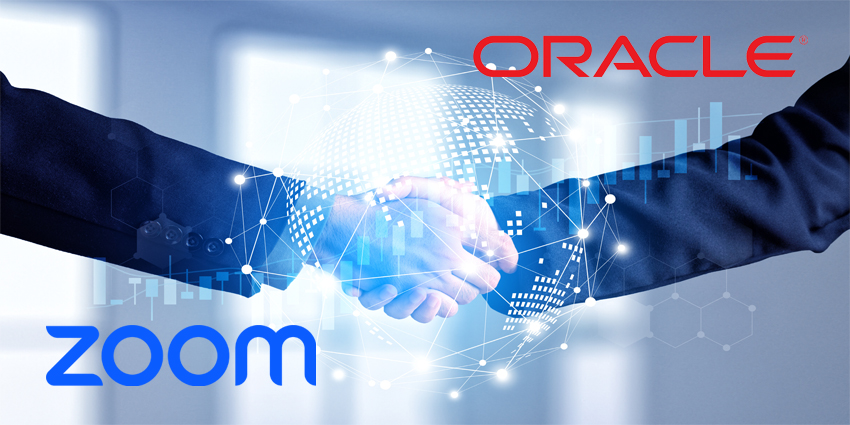Enterprises eager to use AI to enhance customer experience may have paused at a recent MIT report suggesting that 95% of organizations aren’t seeing returns on their AI investments. But failing isn’t inevitable. It’s a result of how organizations approach AI, treating it as a plug-and-play technology instead of an evolving capability that depends on people, data, and process working together.
“The MIT story is looking not at did those pilots succeed in demonstrating the function that they were intended to, but have they failed to scale from that pilot to a full-scale implementation?” Guy Bourgault, Head of Agentic Services at Concentrix, told CX Today in an interview. “Those failures don’t really have much to do with the AI or the platform that’s providing the AI. They have to do with the organization’s ability to operate that AI effectively.”
That distinction, between building AI and operating it effectively at scale, is where most organizations stumble. The pilots work. The models function. The dashboards light up. But when it’s time to move from a proof of concept to a real, integrated customer experience, the project falls apart, leaving management wondering why.
“It’s not a question that has a single answer,” Bourgault said. “It’s a question that gets answered by a multitude of factors.”
And almost all of those factors trace back to how well a company connects its data, technology, people, and processes around the customer.
“The first piece of context to set is they’re failing to scale,” Bourgault said. “The pilots themselves are proving out the functional capability of AI, but those pilots are failing to progress from their pilot stage to a fully scaled integration, or a fully scaled deployment of AI, and that is happening for a variety of reasons.”
At the heart of the problem is how organizations think about AI — as a technology to buy, rather than a capability to operate.
Organizations’ understanding of the true cost of AI is probably not as accurate as it needs to be. They continue to think about AI as a kind of technology implementation initiative where you purchase a technology and you install it into your environment, and then you should be good to go. And that’s not the way that AI is functioning.
AI isn’t like a traditional piece of software that performs identically every time, Bourgault explained. “If you took a logic-based technology tool and asked it to do the same job 100 times in a row, it would do that same job the same way 100 times in a row. If you ask that of a generative AI, it will do it differently each and every time.”
That variability isn’t a flaw — it’s a feature. “AI’s performance is more similar to the way that humans behave than the way that logic-based machines behave,” he said. “Its performance improves over time.”
That performance depends as much on the framework surrounding AI as it does on compute power or model choice. Without a clear operating model, even the best algorithms won’t deliver results. Organizations need the right capabilities in place that influence the performance of AI. To determine that, they need to ask a series of questions, Bourgault said:
Do they have a knowledge base that’s maintained, that’s relevant, that’s curated for AI consumption? Do they have a data ecosystem that’s connected? Is their human workforce appropriately prepared for their roles to be adapted, for their business processes to change, for AI to be integrated into their daily work?
Those questions aren’t about technology alone. They’re about designing a hybrid workforce where AI and humans collaborate to deliver better customer outcomes.
“It’s not only the AI taking over tasks that humans do. It’s humans adding tasks to their workload that involve supporting the AI, providing feedback on responses, providing guardrails to ensure that the AI’s responses are appropriate.”
The Human Interface of AI at Salesforce’s Dreamforce
With Salesforce’s Dreamforce underway this week, conversations across San Francisco are centering on one theme: how humans and AI will interact in the enterprise. “I think we will hear a bit of conversation around the human interface that we have with AI,” said Bourgault, a speaker at the event. “And I think there’ll be some updates or demos that different partners who are speaking in Salesforce demonstrate that show the progression and the advancement that’s happening with conversational AI and specifically voice assistants. I think that’s pretty exciting.”
While Concentrix’s products will make an appearance at Dreamforce, they won’t be the main focus of the company’s participation. “We’ll include our products as part of the talk that I’ll participate in, but they won’t be the focus of what we’re talking about,” he said. “I think the focus will be on the operating framework and the services and solutions that make up that framework, and how organizations can get started with those.”
At Dreamforce, it’s also what’s likely to stand out amid the buzz of new features and demos: a reminder that the future of AI in customer experience will be defined by how seamlessly tools are woven into the way organizations operate and serve their customers.
The Real Value of AI Is Collaboration, Not Automation
One of the most common misconceptions, Bourgault said, is that AI’s main purpose is to automate. “The true value of AI will be revealed through collaboration. It is as a collaborative tool, rather than as an automation tool, that AI can truly deliver the most value to an organization.”
That mindset shift has big implications for customer experience. Instead of using AI just to cut costs or reduce headcount, successful organizations are using it to enhance human expertise. They’re helping employees make faster, more personalized, and more context-aware decisions for customers.
[Y]ou have to be thinking both about the technology as well as the business process. You have to be thinking about the customer outcome, and you have to be thinking about a hybrid workforce of humans and AI that are both involved in delivering that outcome.
But this collaboration doesn’t run on autopilot.
The second most common misconception is that “AI is something that you can plug into your environment and step back from and watch it do its thing right,” Bourgault said. “AI needs constant care, support and feeding. It needs constant monitoring and management to ensure that its performance is at the level of expectation that you have, and to make tweaks and refinements and adjustments as needed, and that will be often, because the environment will always be changing.”
Whether it’s a new version of an open-source large language model (LLM) requiring all of the prompts informing the AI’s behavior to be revisited, or changes to the data the AI refers to requiring it to consume new information for the first time, AI is never “done.” It evolves, just like customer needs do.
Silos Kill Customer Experience
Even when AI pilots perform well, scaling them across departments often hits a wall. “Oftentimes, when you have identified a use case and you’ve integrated AI, it will be performing a category of function that has the potential to be leveraged more broadly across the organization,” Bourgault said. “And that isn’t often happening because of the way that organizations are set up or siloed.”
That siloed approach wastes resources and fractures the customer experience. When marketing, service, and operations each build their own disconnected AI projects, the result is a patchwork of insights that can’t deliver the seamless, personalized experiences customers expect.
“It’s more difficult to extract the maximum value from AI across an organization broadly when those silos are driving decisions about budget and even just integration,” Bourgault said.
Ambition and Intention Define Success
Before implementing AI, enterprises need two things in balance: ambition and intention.
“With ambition, we’re talking about having a clear and aligned vision for the role of AI within your organization… The major use cases for AI currently are documented and known, but how you implement AI against those use cases is very much determined by what you feel to be the role of AI for your organization, the role of AI for your customers.” Bourgault said. “Intention means that an organization is committed to sustainable AI integration at scale, rather than only committing what it takes to stand up a functioning pilot.”
That’s a subtle but crucial difference. A pilot can automate a task. A sustainable AI program transforms how an organization serves its customers.
To guide that transformation, Bourgault’s team uses an Agentic Operating Framework, a model that spans readiness assessment, data operations, risk and compliance, workforce readiness, language model customization, and ongoing observability.
“What we’re looking for is a good blend of intention and ambition,” Bourgault said.
From Hype to Hybrid Workforce
Bourgault described the current moment as “pretty high on the hype cycle.” But unlike past tech waves, AI’s hype curve “needs to be a wavy line… there will be multiple ups and downs as we go through.”
Still, the long-term trajectory is clear: AI will become an integral part of the customer experience — but only for companies that learn how to operate it continuously.
“I think we are headed towards a little bit of a dip. I don’t know that it’s the big dip, simply because when done correctly, AI is beginning — despite the MIT report — to show kind of the promise that it has,” Bourgault said.
There is still a broad misconception that operating AI effectively is about building agents to achieve performance.
“It’s about continuous operation of a network of AI agents. That network might start with one or two. It doesn’t have to be a big network, but ultimately it needs to be run like a program,” Bourgault said. “Organizations need to think about their workforce as being hybrid. It involves agentic AI, and it involves humans, and those two aspects of your workforce will be engaged in collaborative workflows across your entire organization.”
Staying Grounded in What Matters
For leaders navigating this rapid evolution, Bourgault’s advice is simple: don’t lose sight of the customer.
It is important for leaders to stay grounded in the customer and business outcomes that they’re trying to support through agentic AI and view agentic AI’s value more broadly.
Focusing only on efficiency is a trap. “We’ve often had conversations with clients where the only lens they have on the value that AI can drive is through cost cutting,” Bourgault said.
I would say that cost reduction or cost cutting is like the breakdown lane in the AI superhighway.
“There are so many ways in which AI can drive value for your organization, and if you only view it through the lens of cost cutting, it’s going to lead you as a leader to make some short sighted decisions or decisions that are even counterproductive to the AI achieving the performance objectives that you have set for it,” Bourgault said.
Instead, companies should measure AI’s success by how it enhances experiences for both customers and employees. “AI has the ability to improve and increase productivity. It has the ability to create efficiencies of time in the various business processes and even customer journeys and customer processes. It has the ability to generate additional revenue by making experiences more personal and personalized and more relevant,” Bourgault said.
That’s where the real competitive advantage lies.







